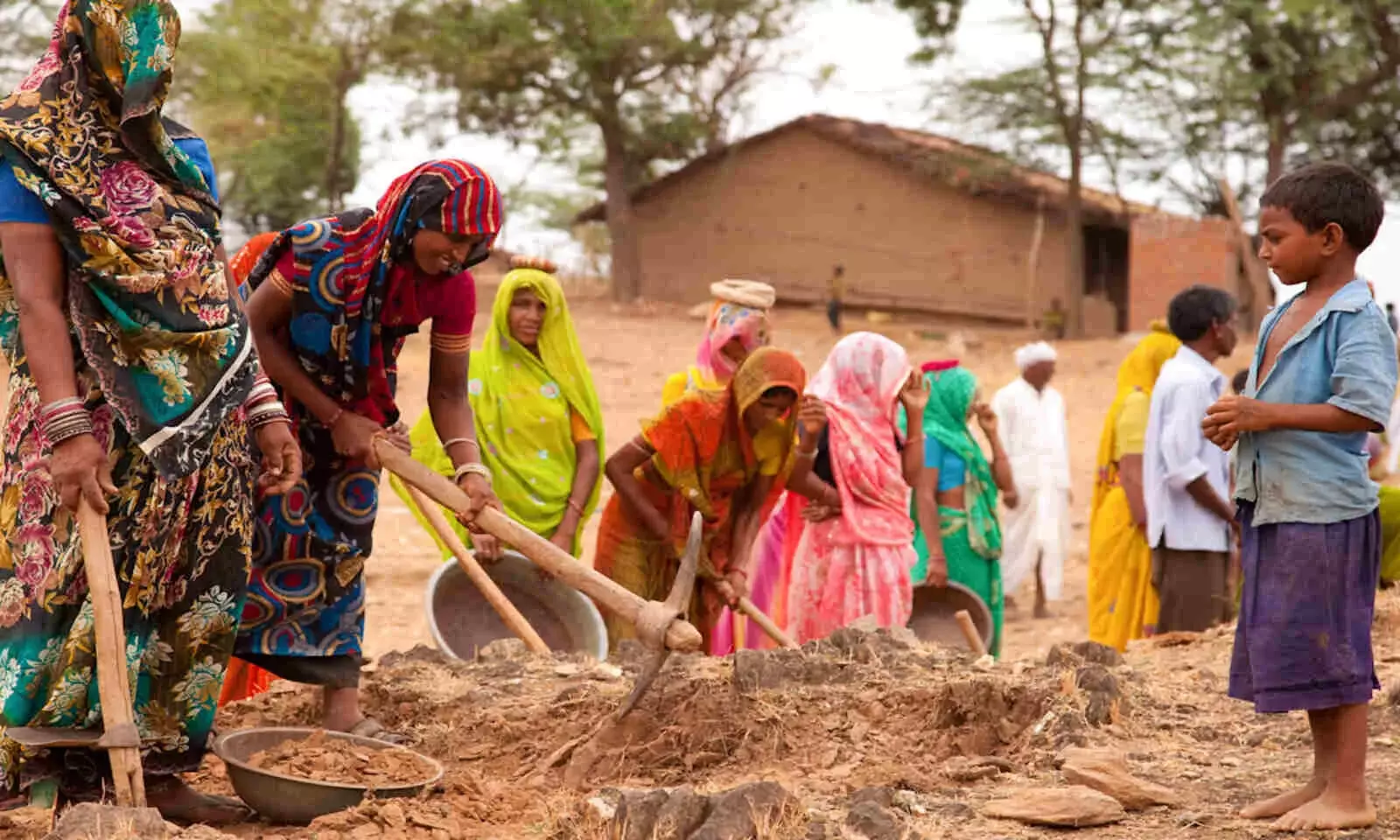All Poll-Bound States See Hike In MGNREGA Wages, Except Kerala
More than 20 states and UTs increase minimum wage by less than Rs 10; activists call it unconstitutional.

Taken from Flickr
The average increase in wages under the Mahatma Gandhi National Rural Employment Guarantee Act, 2005 is pegged at less than 4% in 2021-22, according to the state-wise wage rate for unskilled manual workers notified by the Ministry of Rural Development. This number stood at 11% in 2020-21. Such a low rise is unconstitutional, activists told FactChecker.
The hike in all states is so low that the highest rise is Rs 23 in Meghalaya — 226 for 2021-22 from 203 in 2020-21, according to the notification. While Rajasthan barely sees a hike of Re 1, Madhya Pradesh and Chhattisgarh increase the minimum wage by Rs 3.
"There is no transparency in why and how these wages are determined. The current decisions are arbitrarily made," said Nikhil Dey, a social activist with Suchna evam Rojgar ka Adhikar Abhiyan and National Campaign for People's Right to Information (NCPRI).
No increase in Kerala
Except Kerala, all states register an increase. The poll-bound state's MGNREGA wage stood at Rs 291 last year too. Other poll-bound states like Tamil Nadu and Puducherry recorded the second-highest increase in wages of Rs 17 — Rs 273 in 2021-22 from Rs 256 in 2020-21. The wages saw a jump of Rs 9 in West Bengal (Rs 213 in 2021-22 from Rs 204 in 2020-21) and by Rs 11 in Assam (Rs 224 in 2021-22 from Rs 213 in 2020-21).
"Kerala is a state where we heavily depend on agricultural products coming from outside the state. So, if there is an increase in the price of petrol or diesel there should be a corresponding increase in the price of every agricultural product. If the calculations are done scientifically then there will definitely be an increase in the wages for Kerala," Abey George, former director of Social Audit Society (SAS), an agency entrusted with auditing of works under NREGA told FactChecker.
"Either this is done purposely because there is no political mileage or there is a failure in appreciating the reality of the prices and cost of living. They assume that there is no increase in the cost of living in Kerala," George added.
As on March 18, 2021, there are approximately 2.5 million active workers under MGNREGA and 3,36,888 households have completed 100 days of wage employment in Kerala, according to the Ministry of Rural Development.
"The ministry should share the details of their calculation, otherwise we have to resort to the Right to Information Act. This should be debated during the election time in Kerala because the LDF, UDF and BJP say they have much better prospects in Kerala this year so why can't they explain it to the people of Kerala. Calculations of wage rate should be transparent and placed in front of the people when they vote for assembly elections," George said.
People from West Bengal, Orissa and Tamil Nadu come to Kerala for unskilled manual labour work because they get double the wage. The migrant labourers coming from other states get lower wages than the natives because their bargaining power is less. "Even then, they get Rs 700-900 for a day's work. So when a payment of less than Rs 300 is made to a NREGA worker, it is completely unfair," George ended.
No transparency in determining wage rates
Under the Mahatma Gandhi National Rural Employment Guarantee Act, 2005, the Centre determines the state-wise wage rates for unskilled manual workers working under the scheme. These rates are determined as per changes in the Consumer Price Index for Agricultural Labourers (CPI-AL), which reflects inflation in rural areas.
"The government should disclose the process by which they have increased the rate or the reasons why they have not. Are they increasing the wages arbitrarily or on political grounds or is it based on an index like the agricultural wage index?" George asked.
According to the expert committee appointed by the Ministry of Labour & Employment, the national minimum wage recommended was Rs 375 per day. This, they said, was the minimum amount required for a worker to meet their family expenditure and take care of their health. However, the current and previous wage lists have not met this benchmark. At Rs 315, Haryana records the highest minimum wage for NREGA workers while Chhattisgarh and Madhya Pradesh the lowest at Rs 193 each.
"The Centre should make it transparent and should have discussions with the state and labour groups. It's a tripartite process which includes the state government, industry and labour. The Centre can't decide on its own," social activist Dey said.
In all, 22 states and UTs recorded an increase of less than Rs 10 in wages, whereas 12 saw a hike of over Rs 10 in 2021-22, revealed the notification.
"If the central government does not fix wage rates then the prevailing wage rate for agricultural labour will be the rate for NREGA workers as well. When the Centre fixes a rate below minimum wage, it is unconstitutional. You cannot pay anyone below the minimum wage," said Dey.


